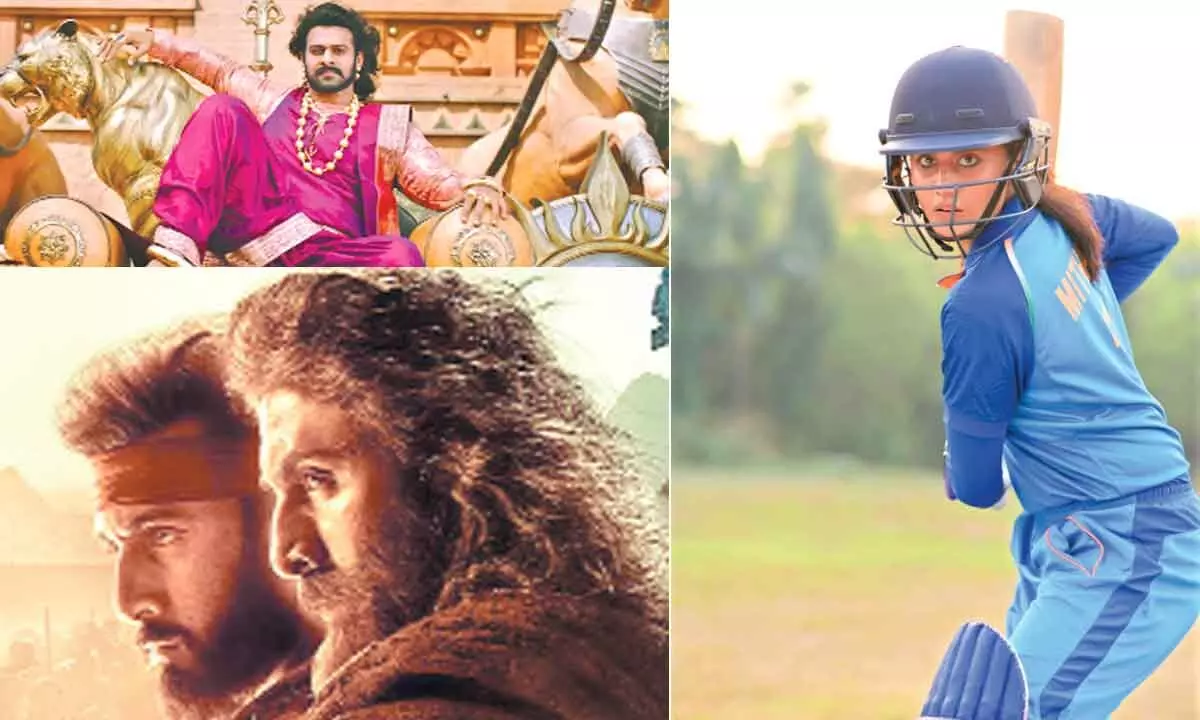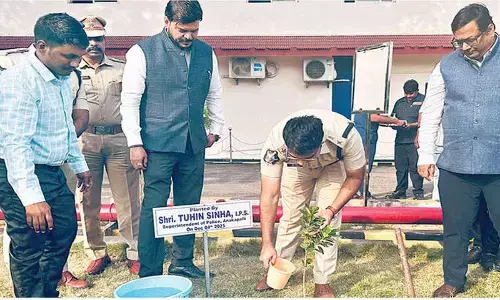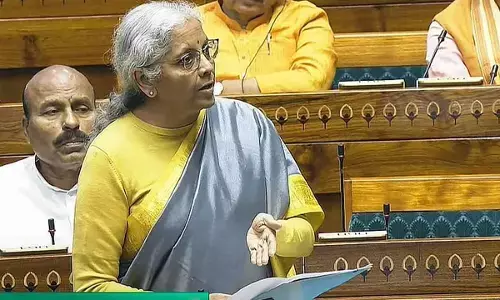The industry has just gone haywire!

Filmmaking in that era was a fulltime passion, business and livelihood all combined in one. The producers then, in most cases, had no other business. They ran their production offices like any other businessman did his
Mehboob Productions, Producer Mehboob Khan; RK Films, Producer Raj Kapoor; V. Shantaram Films, Producer V. Shantaram; Guru Dutt Films, Producer Guru Dutt; MKD Films, Producer Manmohan Kikubhai Desai; Prakash Mehra Productions, Producer Prakash Mehra; BR Films, Producer B.R. Chopra; Yash Raj Films, Producer Yash Chopra. Add to this list filmmakers such as Hrishikesh Mukherjee and Shakti Samanta, among others.
All these and many others staked their names and reputation when they made a film. Their films were sold in their name, not on who starred in the film. You knew who was making the film and expected accordingly. For instance, B.R. Chopra made films of social relevance of that era and yet touched themes that any other producer would consider risky.
His 'Dhool Ka Phool' dealt with an out-of-marriage child abandoned and brought up by a Muslim man who croons, 'Tu Hindu banega na Musalman banega ... insaan ki aulaad hai insaan banega'. The film that dealt with such issues was unthinkable in those days, but these were a fact of life. Chopra's 'Gumraah', where a married woman strays, was way ahead of its time, yet was a success, and has inspired many more films on a similar theme.
Mehboob Khan was left-leaning as his banner of sickle and hammer indicated. He made socially relevant films. 'Mother India' was the remake of his own earlier film, 'Aurat'. It was about a poor single woman struggling to bring up her children, tormented and exploited by the rich upper class.
Manmohan Desai stuck to his formula of providing pure entertainment with films such as 'Naseeb' and 'Amar Akbar Anhony'. Logic or plausibility had no place in his films. But his audience came out from a cinema utterly delighted.
V. Shantaram believed in promoting Indian values and culture in a way that it did not come across as a sermon. 'Navrang', for example, talks about a man not happy with his woman because she is not what he had in mind for a spouse. He desires the woman of his fantasy.
And, Raj Kapoor, of course, processed true and pure love through all his films. All these and other such makers had conviction in their films. It was not all about making money, it was about seeking success through people's approval of what they made. Their conviction usually paid off and they continued to make films.
A filmmaker was involved in all aspects of filmmaking, notably, creativity, recordings and story sessions, and was omnipresent on the sets during shootings. He truly qualified to be called a film producer.
Still, a producer spent more time on his music sittings than he did with his writers. If the script was the body, then music was the soul of a film. Is it any wonder that even today their songs rule the airwaves! Yes, and the producer's worst test was when dealing with a financier, sometimes a number of them, to raise funds and complete his film.
Filmmaking in that era was a fulltime passion, business and livelihood all combined in one. The producers then, in most cases, had no other business. They ran their production offices like any other businessman did his.
Yes, and a normal production office worked with the bare minimum staff; one typist-cum-phone operator, one peon and a part-time accountant. They did not need a CEO or a battery of busy-looking 'executives'. In many film production offices, footwear was not allowed; one needed to remove one's shoes outside because the place was sacrosanct.
The phrase multi-starrer was not in vogue in those days and unaware of this, a number of filmmakers were making movies with more than one star. If a story required it, it was done. The term multi-starrer came into vogue much later in the 1970s, when many other stars were cast with Amitabh Bachchan especially, and also with other stars.
It was soon felt that no single star, however big he may be, could carry a film alone. A film script had to be built around multiple actors. It is a fact that even the promotional trailers of forthcoming films attracted and regaled more viewers than a film does nowadays! It was a usual practice to run the trailers of yet-to-release films before the main feature started and people made sure they were seated in the hall in time to catch them.
Of course, not all films ran in those days either. But the efforts were there for all to see. Today, when one sees films of those days, even the ones that failed at the box office seem to be more worth watching. There is no comparison between how the films were conceived and made then and now. There is no comparison, but one is still tempted to do so.
As for the banners and producers whose films are awaited avidly, there are none now. Till not very long ago, one expected a movie worth one's while from the few banners that have earned recognition. One is, of course, Yash Raj Films (managed by Aditya Chopra), the other being Nadiadwala Grandson (Sajid Nadiadwala whose entire family, including grandparents and uncles, have been in the film business), and, then, Dharma Productions (Karan Johar).
Even these makers have failed to deliver in recent times and Yash Raj's latest release, 'Shamshera', can be added to the list. These three makers have inherited filmmaking from elders and successfully carried their banners forward. Recently, though, they have not been able to be consistent in what they deliver. Maybe because they now go simultaneously for multiple productions.
When it comes to dependable directors, you don't even need all five fingers to count them. Raju Hirani and Rohit Shetty top the list, though Rohit has just delivered a dud in 'Sooryavanshi'. Then there is Sanjay Leela Bhansali, of course, who loves to make costume dramas of varied kinds.
There are stars who take to direction. There are also a couple who think they know better than any director and do backseat driving, that is, directing the director! It can at best be described as the fancy of a star. There is none compared to the actors who doubled as directors in the past, such as Raj Kapoor, V. Shantaram, Guru Dutt and Manoj Kumar.
And if one producer tackled many stars in one film, the scene today is just the opposite. Many producers are chasing one star. And it is not box-office success that makes a star, the media does! When you see credit titles of a film, it lists at least half-a- dozen names as producer. So, who is the real producer? Who is bankrolling the film?
Maybe one brought the idea, the other brought the star, another may have bought a 10 per cent stake, and yet another knows how to make the film reach the cinemas. One thing is common in most such cases and that is, none of them knows either filmmaking or the business, or even the economics of filmmaking.
They think a star is enough to make and sell a film. So what happens is that a star they bring to the roster costs more than all other expenses put together to make a film. Let me cite a recent example. We had this film, 'Shabaash Mithu', released just a couple of weeks back. A film about cricket legend Mithali Raj, who never let the country down when on the field. Sadly, the biopic lets not only the viewer down, but also the cricketing legend. Buying the rights from her would have cost a packet!
And how much did the actress demand? Rs 12 crore plus 20 per cent share in profits! The film could not cross even the Rs 1-crore mark in the opening weekend. The actress just added another flop to her list. On what basis does such an actor demand crores?
Then there is the reigning superstar who charges over Rs 100 crore, the amount that his last three releases have not been able to put together. Another action male star demands Rs 30 crore per film, but his last three films have collected a total of Rs 27 crore! If one producer pays so much and suffers, it is understood, but despite such results, how do other makers still go to the same stars?
This is just one example. There is a lineup of such filmmakers who can only be described either as prospect hunters or glamour struck. What was the maximum price of a superstar during the era of superstars? The big star's fees equaled the recovery from one major circuit. Bombay Circuit was a major circuit. Amitabh Bachchan films commanded the equivalent of that till his producers got greedy!
It is time for the Mumbai filmmakers to come out of the 'Baahubali' hangover. They must stop biopics of all and sundry; you may pay and pick up the rights easily, but execution is not that simple. And, most of all, first learn the economics of filmmaking.














